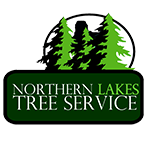Glossary of Terms
Arborist – A tree care specialist responsible for the cultivation and care of trees and shrubs. This includes tree surgery, diagnosing and treating tree diseases, preventing tree health issues, and controlling pests.
Branch Collar – The area of trunk tissue that forms around the base of a branch where it meets the main stem or another branch. As a branch weakens or dies, the branch collar thickens. All pruning cuts should be made at this branch collar for optimal healing.
Interior Clean-Out – Selective pruning to remove non-beneficial parts within a tree or shrub, including crossing or rubbing branches, as well as dead, diseased, or broken branches.
Crown – The upper section of a tree or shrub, extending from the lowest branch to the top. It includes all leaves and branches.
Crown Raising – Removing lower branches of a tree to provide space for clearance or to enhance visibility.
Crown Thinning – Selective removal of branches to decrease density and weight in the tree’s canopy, improving light penetration and air flow.
Decay – The deterioration of wood caused by microorganisms that degrade the tree’s structural tissue.
Dead Wooding – Removing dead or dying limbs from the tree to enhance safety and aesthetics.
Hazard Assessment – A workplace evaluation to identify potential hazards that may arise during specific tasks.
Girdling – When an object or root encircles the tree trunk, causing restricted growth by compressing tissues. This can reduce the tree's health and stability as it limits energy and nutrient movement.
ISA Certified Arborist – A professional with at least three years of experience in arboriculture and certified by the International Society of Arboriculture (ISA) after passing a comprehensive exam. They are committed to continuing education and skilled in managing and supervising tree care.
Land Clearing – The process of removing native vegetation, such as bushlands, forests, and grasslands, to convert the land for agriculture, urban development, or other purposes.
Lateral – A branch or twig growing from a parent branch or trunk.
Leader – The dominant upright stem or main trunk of a tree. Trees may have multiple leaders.
Leaves – Tree structures that absorb carbon dioxide and release oxygen through photosynthesis, providing energy for the tree.
Parent Branch or Stem – The main trunk or large limb from which lateral branches grow.
Plant Health Care (PHC) – A holistic approach to maintaining landscape health, vitality, and appearance. PHC involves regular monitoring, preventive treatments, and collaboration with tree owners to ensure safe, environmentally sound care.
Pruning – The selective removal of plant parts such as branches, buds, or roots to improve plant health, shape growth, and manage risks. Pruning can also prepare plants for transplanting and enhance flower or fruit yield.
Removal – The extraction of an unwanted or dead tree or shrub from a landscape.
Roots – The structural support system for the tree that absorbs nutrients and water while storing food.
Selective Pruning – The careful removal of plant parts to achieve specific goals, such as shaping or enhancing health.
Stump Grinding – Grinding a tree stump down 12-18 inches below the soil surface. The resulting wood chips can be left on-site unless removal is requested.
Topping – Cutting back a tree’s height without regard to health or structure. Topping is considered an improper pruning practice.
Tree Health Management – Comprehensive tree and shrub care provided throughout the plant’s lifecycle.
Trunk/Limbs/Stems – Structural support structures that store food and contain the vascular system, which transports water, nutrients, and energy between the roots and leaves.
Wound – Any opening created by cutting or removing bark that injures living tissue. Even proper pruning creates a wound in the tree.
